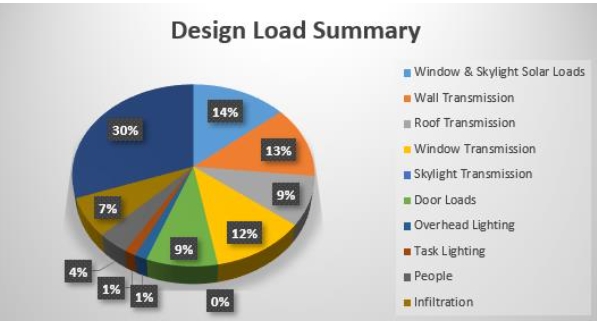Developing design response spectra for Benghazi city including soil magnification effects
Abstract
Earthquakes in some countries worldwide cause loss of lives and properties. In Libya, the design of structures to resist earthquake forces was based on a paper published by Mallick in 1976. In 1977, and after small changes in the earthquake zoning map of Libya, the ministry of housing, at that time, adopted it as a draft code of practice for the design of structures to resist earthquake forces. With Benghazi city undergoing significant rehabilitation and development programs, including major national projects, there is a pressing need to estimate updated probabilistic seismic hazard maps and design response spectra specific to the city. This study presented updated probabilistic seismic hazard ground motion for Benghazi city, considering different return periods and accounting for peak ground acceleration (PGA) values with various soil conditions. Proposed design response spectra for Benghazi City unveil substantial PGA amplifications in soft soil areas.
References
[1]American Society of Civil Engineering. Minimum Design Loads and Associated Criteria for Buildings and Other Structures (7-16). American Society of Civil Engineering; 2017.
[2]Erdik M, Tümsa MBD, Pınar A, et al. A preliminary report on the February 6, 2023 earthquakes in Türkiye. Available online: https://temblor.net/temblor/preliminary-report-2023-turkey-earthquakes-15027/ (accessed on 2 March 2024).
[3]Karakale V, Özgür E, Ataoğlu Ş. Site Observations on Buildings’ Performance in Hatay Province after Kahramanmaraş Earthquakes. El-Cezeri Journal of Science and Engineering. 2023; 10(3): 506-516. doi: 10.31202/ecjse.1253284.
[4]Mallick DV. Seismic Zoning of Libya. In: Proceedings of the 6th World Conference on Earthquake Engineering; 10-14 January 1977; New Delhi, India.
[5]Lagesse R, Free M, Lubkowski Z. Probabilistic Seismic Hazard Assessment for Libya. In: Proceedings of the 16th World Conference on Earthquake Engineering; 9-13 January 2017; Santiago, Chile.
[6]Karakale V, Suleiman RE, Layas FM. Lateral load behavior of RC buildings exposed to fire: case study. Journal of Asian Architecture and Building Engineering. 2022; 22(1): 274-285. doi: 10.1080/13467581.2022.2026777.
[7]Layas FM, Karakale V, Suleiman RE. Behavior of RC Buildings under Blast Loading: Case Study. Recent Progress in Materials. 2023; 5(3): 1-12. doi: 10.21926/rpm.2303029.
[8]Kebeasy RM. Seismicity and Seismotectonics of Libya, Symposium on the Geology of Libya. Tripoli. 1978; 9: 16-21.
[9]Suleiman AS, Doser DI. The seismicity, seismotectonics and earthquake hazards of Libya, with detailed analysis of the 1935 April 19, M = 7.1 earthquake sequence. Geophysical Journal International. 1995; 120(2): 312-322. doi: 10.1111/j.1365-246x.1995.tb01820.x
[10]Al-Heety EA. Seismicity and seismotectonics of Libya: as an example of intraplate environment. Arabian Journal of Geosciences. 2011; 6(1). doi:10.1007/s12517-011-0347-y
[11]Al-Heety EA, Eshwehdi A. Seismicity of the Northwestern Region of Libya: An Example of Continental Seismicity. Seismological Research Letters. 2006; 77(6): 691-696. doi: 10.1785/gssrl.77.6.691
[12]Shaw B, Jackson J. Earthquake mechanisms and active tectonics of the Hellenic subduction zone. Geophysical Journal International. 2010; 181(2): 966-984. doi: 10.1111/j.1365-246x.2010.04551.x
[13]Ambraseys NN. Material for the Investigation of the Seismicity of Libya. Libyan Studies. 1994; 25: 7-22. doi: 10.1017/s0263718900006191
[14]Suleiman AB. Establishment of the Libyan National Seismological Network (LNSN): An Effort Aimed at Assessing and Mitigating Natural Disaster Risks on the National and Regional Scale. Metadata Workshop; 2009.
[15]Suleiman AS, Albini P, Migliavacca P. A Short Introduction to Historical Earthquakes in Libya. Annals of Geophysics. 2004; 47: 545-554.
[16]HashashYMA, Musgrove MI, Harmon JA, et al. Deepsoil 7.0, User Manual. 2020. Available online: https://www.studocu.com/id/document/institut-teknologi-sepuluh-nopember/civil-infrastructure/deepsoil-user-manual-v7/68704466 (accessed on 11 November 2023).
Copyright (c) 2024 Fathi M. Layas, Vail Karakale, Ramadan E. Suleiman

This work is licensed under a Creative Commons Attribution 4.0 International License.












